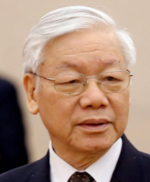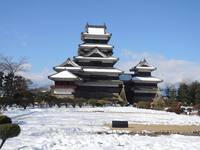Minh-Cong
| Minh-Cong | ||
| ||
| Capital | Nha Dac | |
| Governor | Rhan Nuyen | |
I feel as if the people on the mainland of the confederacy do not fully appreciate the fullness with which the people of Minh-Cong support the confederacy as a whole, despite their physical separation on the island of Hypernostria. Their people, though significantly less interested in the progress of science than mainland confederates, certainly do provide a service to our nation, that being the soul of culture.—Edward Coldstone, Cira: A Legacy (1675 AN)
Minh-Cong is a constituent governorate of the Ciric Confederacy, and is the only territory of the confederacy situated overseas from the mainland on Sypyr, being located on the eastern edge of the island of Hypernostria in Corum. Minh-Cong is significantly different from the mainland confederacy culture-wise, but the governorate is still very closely linked to and loyal to the main confederate government in the Confederate Parliament.
Overview
Minh-Cong is situated on the eastern edge of Hypernostria, south of the continent of Corum. It's proximity to the mainland of the continent affords it a minimal amount of exposure to the extremely unique flora and fauna particular to the continent, though the extreme cold of the southern regions and early purges of certain dangerous beasts have lessened the populations of most of these creatures to be extremely uncommon.
The territory is currently governed by governor Rhan Nuyen, a former arts university professor who began his political life by running for and joining the local lesser parliament of Minh-Cong, and subsequently being elected as governor of the constituency. As a whole, the political atmosphere of Minh-Cong is fairly similar to the politics of the mainland confederacy, generally being ruled by policies of inclusion and progressivism, though Minh-Cong is much more likely to put forward politics expressing "sentiment" about something that would increase the scientific output of the nation; these concerns are almost always related to environmentalism.
While the governorate does not have a particular cultural emphasis on the military, it is still an important strategic asset to the confederacy due to its location, which has prompted the construction of a few significant military bases in Minh-Cong and caused the constituency to produce some of the top military officers of the confederacy, including the current director of the military, Vangh Tet. These military bases are also a cause of a significant portion of the migration of mainland confederates to the constituency.
Peoples
Minh-Cong, as a constituency, is mainly comprised of two peoples, both of which are native to the area. The far larger ethnic group and namesake of the governorate is the Minh people, who compose about eighty percent of Minh-Cong's inhabitants. The Minh form the basis for most of the unique cultural identity of Minh-Cong, since they encompass most citizens of Minh-Cong, in that they tend toward a culture of tradition and art, with a strong identity of respect and creativity in particular. The most famous Minh in the confederacy, outside of political leaders, tend to be stars of literature, music, art, or film.
The other native people, with about seventeen percent of Minh-Cong's inhabitants in the category, are the Tsuki people, who are a loud minority ethnicity in Minh-Cong. The Tsuki, through centuries of cultural homogenisation and blending with the Minh, have developed a very similar culture, placing a high value on art and respect. However, the Tsuki have managed to maintain a small measure of a unique cultural identity, mostly in the details of the life of a typical Tsuki. The Tsuki, for example, maintain many small ritualistic behaviours that formed the basis of an ancient religion known as the Tsuki no Karuto, which was followed by most Tsuki people before unification with the Minh. An example of these rituals is the prayer directed towards moon spirits most Tsuki will offer before sleeping, which stems from an old belief that the moon and its spirits govern the rest of humans. It's thought that the Tsuki no Karuto's fixation with the moon is a result of the southern latitude of the island having resulted in very long nights in winter, which allowed a religion based around the moon to flourish.
Culture
Minh-Cong has a history of promoting a culture with an extreme fixation on respect of one's betters, usually being elders and older family members. A prominent example of this particular aspect of culture is the typical Minh honourific, "Aeng", being the word for "elder". The various palaces and mansions built throughout the governorate which were historically meant for the rulers and warlords of different factions and clans which made up much of the history of Minh-Cong. Many of these structures have been repurposed for current political leader's uses since the unification and democratisation of Minh-Cong that came with its subsumption into the Ciric Confederacy, such as the famous Tranh Luc Palace, which is the current residence of the governor of Minh-Cong.
Minh-Cong also produces extremely few scientists from its native population of Minh and Tsuki peoples. However, Minh-Cong does produce a very large portion of confederate practitioners of the fine arts. The Minh focus on art does not just extend to "art", but also literature, poetry, song, and film. This is further exemplified by the constituency's lack of strong scientific and maths based schooling system, instead focusing on fine arts education, with most of the art universities in the confederacy being located in Minh-Cong.



